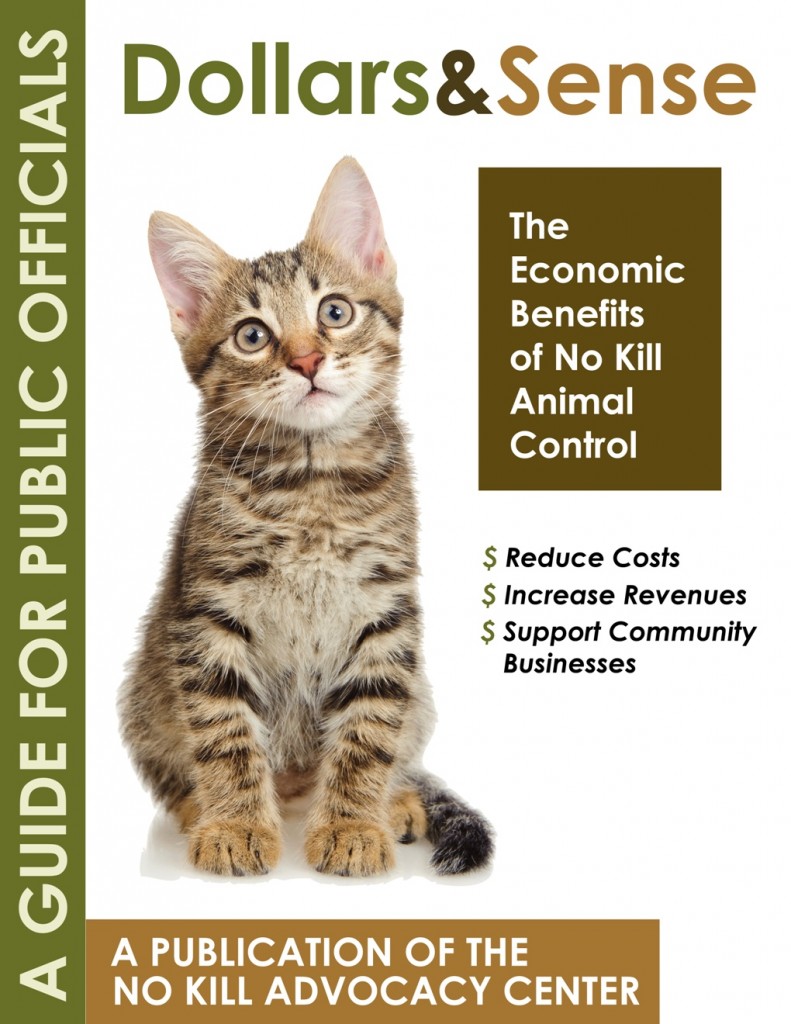
The are four myths that allow the paradigm of killing to continue. The myth that “open admission” shelters cannot be No Kill because of pet overpopulation. The myth that No Kill is not possible because of the irresponsible public. The myth that No Kill is inconsistent with public health and safety. And the myth that No Kill is too expensive. The first three are addressed in the document No Kill 101: A Primer on No Kill Animal Control Sheltering for Public Officials. You can download it for free by clicking here. Here’s the fourth: “No Kill is too expensive. Our community cannot afford it.”
Today, there are dozens of No Kill communities across the United States; in states as diverse as Kentucky, Virginia, Indiana, California, New York, Texas, Michigan, Minnesota, Nevada, and elsewhere. These communities share little in common demographically. What they do share is leadership with a “can do” attitude and a passion for saving lives, as well as the model used to achieve it: the programs and services of the No Kill Equation (See No Kill 101: A Primer on No Kill Animal Control Sheltering for Public Officials). These communities not only prove that No Kill can be achieved at “open admission” municipal shelters in both urban and rural, Northern and Southern, large and small, and both politically liberal and conservative communities, but also that No Kill is consistent with a municipal shelter’s public safety mandate. They also disprove the idea that communities with high intake rates can’t be No Kill because of the antiquated and disproven notions of “pet overpopulation” and the “irresponsible public.”
This is good news because not only do the animals deserve it and alternatives to killing exist, but the public is increasing demanding it. In a national survey, 96% of Americans—almost every single person across the social and political spectrum—said we have a moral obligation to protect animals and that we should have strong laws to do so. Saving lives is not only good public policy; it is also good bipartisan politics. But at a time when economic challenges are being faced in communities across the country, legislators and policy makers are asking if they can afford to embrace a more humane alternative.
Thankfully, many communities have already proven that No Kill animal control is cost-effective, saves municipalities expenses associated with killing, and brings badly needed revenues into public coffers and community businesses. In addition, while some of the communities which have embraced No Kill have also increased funding for animal services, not all of them have. Achieving No Kill does not necessarily require increased expenditures on animal control.
Although costs vary somewhat, impounding, caring for, and ultimately killing an animal and disposing of his/her body costs approximately $106.00 ($66 for impoundment and $40 for killing and disposal). The process is entirely revenue negative to the municipality in contrast to the No Kill approach which transfers costs to private philanthropy, brings in adoption revenue and other user fees, and supports local businesses. In just one community, a No Kill initiative yielded $250,000 in increased revenues at a time the shelter also significantly reduced expenditures. In addition, the positive economic impact to businesses due to subsequent spending by adopters on those animals totaled over $12,000,000 in sales annually. Over the course of the lifetime of those animals and subsequent adoptions, it is estimated that these animals will generate $300 million, bringing in over $20,000,000 in sales tax revenues.
Does it make more economic sense to adopt out animals, transfer animals to private non-profit rescue organizations, and increase the number of stray animals reclaimed by their families, all revenue positive activities that save the costs of killing and bring in fees and other revenues? Of course it does. At a time when dozens of communities across the country have achieved No Kill, including those with per capita intake rates up to eight times higher than New York City, shelters which continue to kill in the face of lifesaving alternatives are not only engaging in morally bankrupt conduct (killing animals who have a place to go), they are bankrupting community coffers. No Kill animal control not only makes good sense.
It makes dollars and cents.
Download Dollars & Sense: The Economic Benefits of No Kill Animal Control by clicking here.